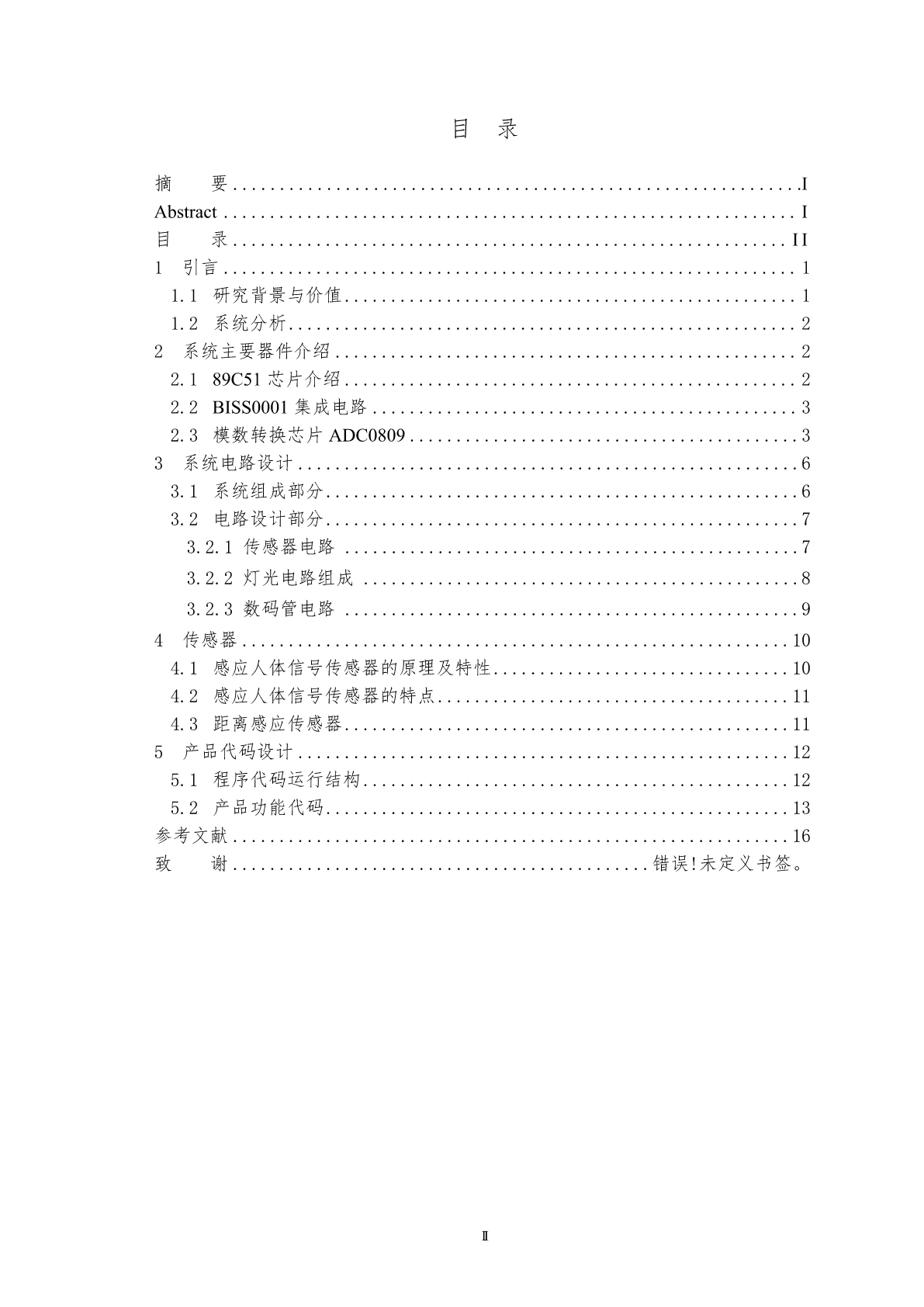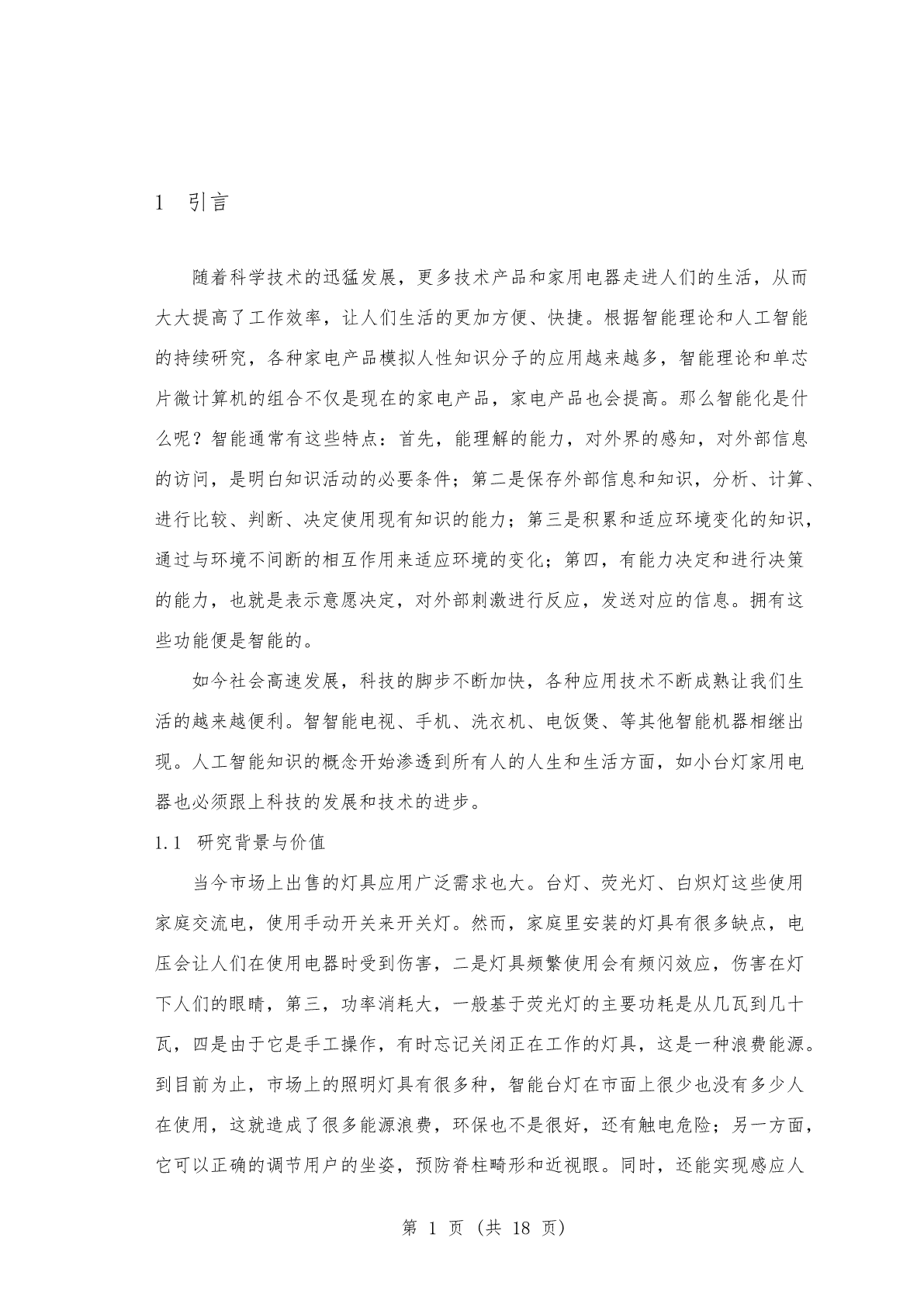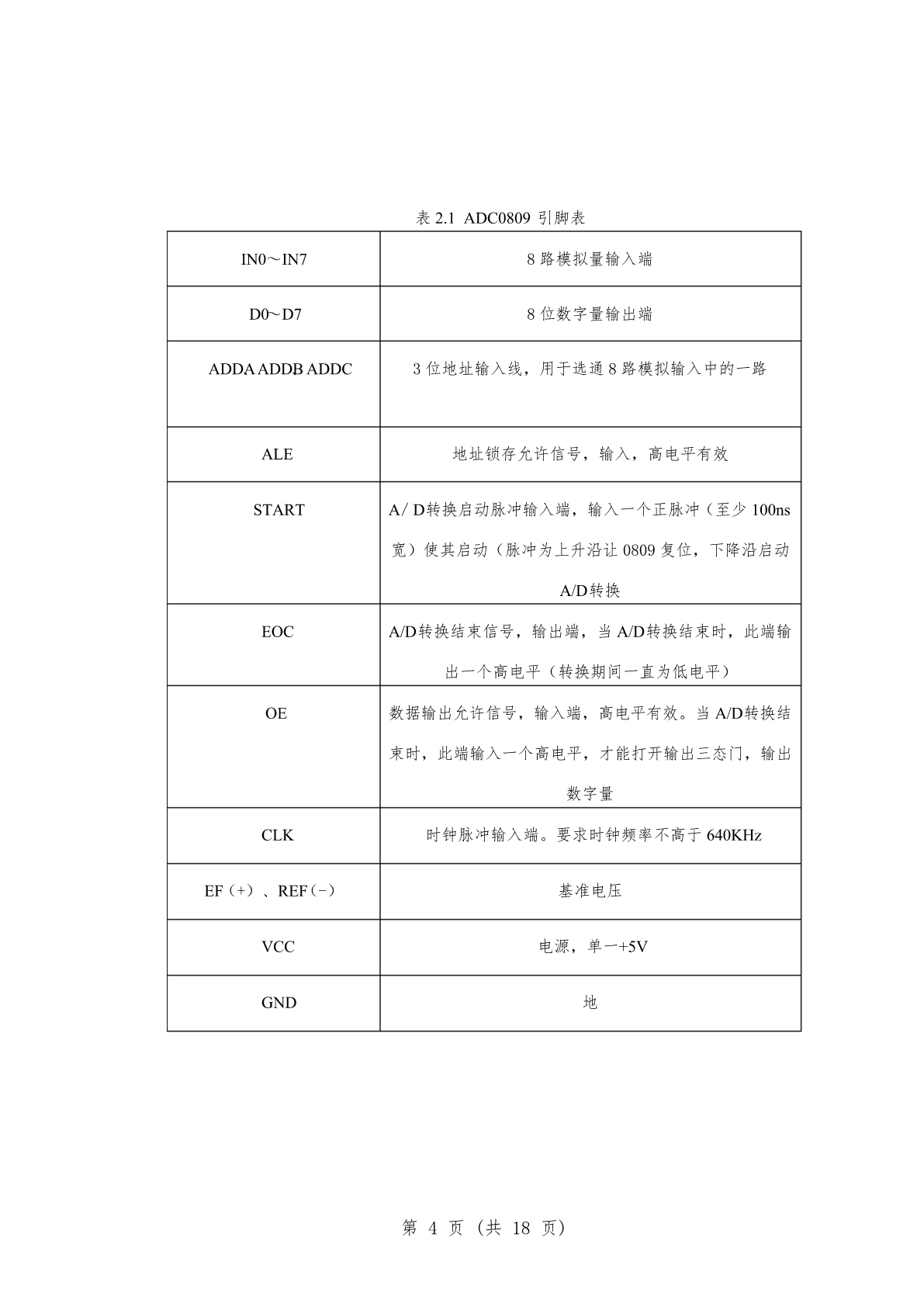
基于单片机的智能台灯的设计与实现.pdf

文库****品店










亲,该文档总共18页,到这已经超出免费预览范围,如果喜欢就直接下载吧~
相关资料

基于单片机的智能台灯的设计与实现.pdf
基于单片机的智能台灯的设计与实现摘要:随着科学不断发展进步,让人民的生活越来越便利。生活中常见的智能技术有智能洗衣机、智能电饭锅、智能电磁炉等,它们都是运用单片机来控制各种功能以达到智能化。智能化产品比过去更方便、功能更优秀,它提高了人们的生活品质。本产品是采用人体感应、集成电路BISS和测距传感器等技术组成并用单片机进行控制。当夜晚来临时传感器感应到人体信号时,台灯便点亮,人走开时便熄灭,并且测距传感器感应人体坐姿来预防坐姿不良,还可以设置时间来用于学习,这些便是它的几大优点。关键词:BISS0001;

基于C51单片机的智能台灯的设计与实现.pdf
C51单片机的智能台灯的设计与实现摘要:着重论述了以一款为控制核心,选用ESP8266wifi模块为无线传输方式,设计并制作的一款新型只能台灯。该款智能台灯系统独特的设计了两种不同的工作方式。模式一:本地模式,通过红外感应是否有人靠近,光线感应模块感应环境光亮度,当有人靠近时打开台灯,并根据环境光调节亮度;模式二:远程控制模式,通过ESP8266作为wifi信号传输工具,在利用手机上的上位机实现台灯的远程操作,包括打开关闭台灯以及亮度控制,其亮度利用单片机的PWM输出进行调节实现。通过测试可知,这款新型智

基于C51单片机的智能台灯的设计与实现.pdf

基于单片机的智能台灯设计.doc
摘要89C51是一种带4K字节闪烁可编程可擦除只读存储器(FPEROM—FalshProgrammableandErasableReadOnlyMemory)的低电压,高性能CMOS8位微处理器,俗称单片机。89C2051是一种带2K字节闪烁可编程可擦除只读存储器的单片机。单片机的可擦除只读存储器可以反复擦除100次。该器件采用ATMEL高密度非易失存储器制造技术制造,与工业标准的MCS-51指令集和输出管脚相兼容。由于将多功能8位CPU和闪烁存储器组合在单个芯片中,ATMEL的89C51是一种高效微控制

基于单片机的智能台灯设计.doc
....jz.目录摘要3Abstract41.绪论52.1单片机主机系统电路72.1.1系统电路组成72.1.2系统工作原理82.1.3系统控制核心82.2红外传感器电路92.2.1人体位置检测102.2.2环境光检测102.2.3过零检测部分112.3输出控制部分电路112.4电源控制部分122.5遥控器部分133.系统的软件设计143.1系统程序框图143.2系统主程序设计153.3采样子程序设计173.4滤波程序设计183.5遥控器程序设计194.结语22参考文献23附录A24摘要这个智能台灯的主要
